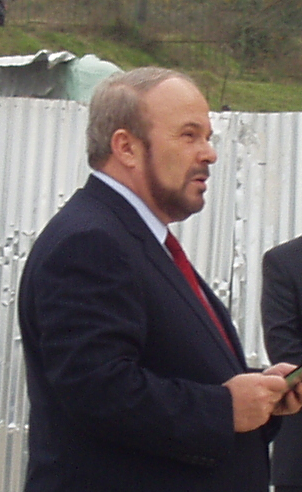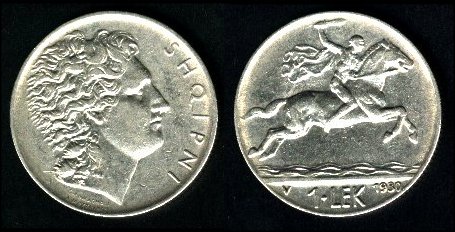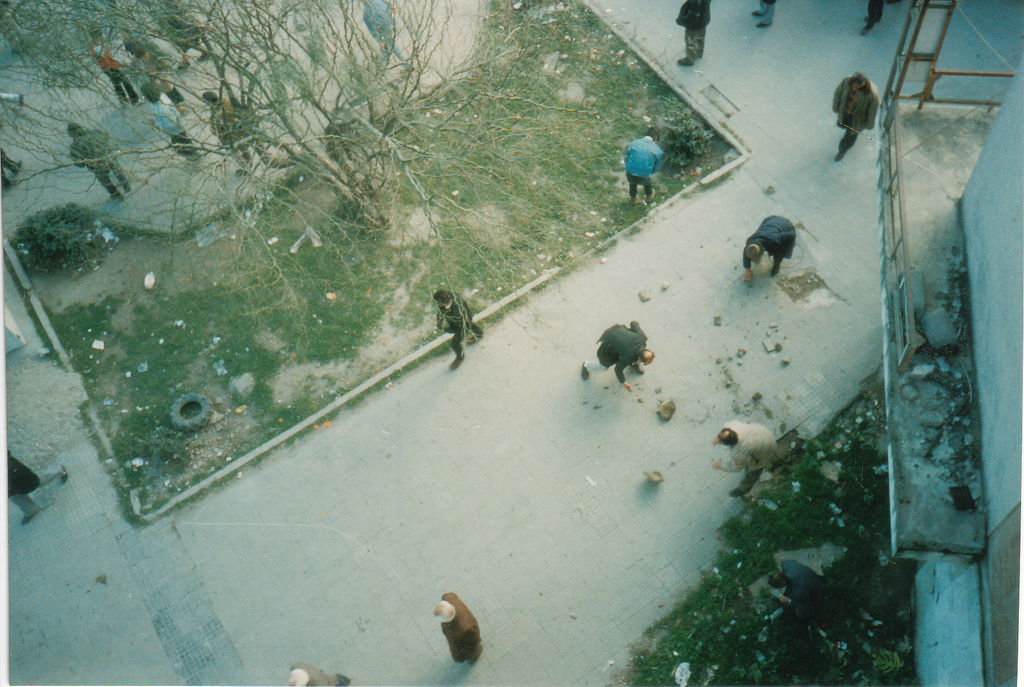|
Podgorica–Shkodër Railway
The Podgorica–Shkodër railway is a railway connecting Albania and Montenegro, used for freight-purposes only. It is Albania's only international rail link. Although initially built between 1984–1985, it fell into disuse in 1991 and later fully reopened in 2003. The rail infrastructure is operated by Montenegrin ŽICG on Montenegrin territory and Hekurudha Shqiptare ''(Albanian Railways)'' on Albanian territory. Nevertheless train services are usually operated by Montenegrin operator ŽPCG between Podgorica and the Albanian Bajzë station and by Hekurudha Shqiptare between Bajzë and Shkodër only. The line connects to Belgrade–Bar railway and Nikšić–Podgorica railway in Podgorica and Shkodër–Vorë railway in Shkodër. Overview Podgorica–Shkodër is a long standard gauge railway, of which runs through Albania and the remaining through Montenegro. Like other railways throughout Albania, the railway is not electrified. The line's last station in Al ... [...More Info...] [...Related Items...] OR: [Wikipedia] [Google] [Baidu] |
Podgorica Rail Station
The Podgorica Railway Station ( cnr, Жељезничка станица Подгорица, Željeznička stanica Podgorica) is a railway station located in Podgorica, Montenegro. The first railway station in Podgorica was built in 1927 near the ''clock tower'' in the ''Stara Varoš'' (''Old Town'') part of the city, some away from the current station. The current station was built after World War II, and it was upgraded gradually to its current shape and capacity up until the 1970s. It is the only train station located in Podgorica, and serves as a hub for Railways of Montenegro. The Belgrade–Bar railway converges with the line to Nikšić and line to Shkodër at the station. The station is a through station, located on a trunk line that bisects Podgorica in a north–south direction. The station building was not planned as a permanent passenger station, but rather as an administration and control centre for the Montenegrin railway system. The passenger terminal was meant ... [...More Info...] [...Related Items...] OR: [Wikipedia] [Google] [Baidu] |
Shkodër Rail Station
Shkodër ( , ; sq-definite, Shkodra) is the fifth-most-populous city of the Republic of Albania and the seat of Shkodër County and Shkodër Municipality. The city sprawls across the Plain of Mbishkodra between the southern part of Lake Shkodër and the foothills of the Albanian Alps on the banks of Buna, Drin and Kir. Due to its proximity to the Adriatic Sea, Shkodër is affected by a seasonal Mediterranean climate with continental influences. One of the oldest continuously inhabited cities in the Balkans, Shkodër was founded under the name ''Scodra'' upon the traditional lands of the Illyrian tribes of the Ardiaei and Labeates in the 4th century BCE. It has historically developed on a hill strategically located in the outflow of Lake Shkodër into the Buna River. The Romans annexed the city after the third Illyrian War in 168 BCE, when Gentius was defeated by the Roman force of Anicius Gallus. In the 3rd century CE, Shkodër became the capital of Praevalitana, due to ... [...More Info...] [...Related Items...] OR: [Wikipedia] [Google] [Baidu] |
Fatos Nano
Fatos Nano (; born 16 September 1952) is an Albanian socialist politician who served as Prime Minister of Albania The Prime Minister of Albania ( sq, Kryeministri i Shqipërisë), officially styled Prime Minister of the Republic of Albania ( sq, Kryeministri i Republikës së Shqipërisë), is the head of government of the Republic of Albania and the mos ... in 1991, from 1997 to 1998 and from 2002 to 2005. He was the first leader and founder of the Socialist Party of Albania and a member of the Assembly of Albania, Albanian Parliament from 1991 to 1993 and 1997 to 2009. He reformed the anti-revisionist Marxist-Leninist ideology of the Labor Party of Albania into social democracy for its successor, the Socialist Party. During his leadership, the Socialist Party, as a result of reforms, joined the Socialist International and Party of European Socialists. Nano was a candidate in the 2007 Albanian presidential election, 2007 presidential election but did not win. He again tried ... [...More Info...] [...Related Items...] OR: [Wikipedia] [Google] [Baidu] |
Prime Minister Of Albania
The Prime Minister of Albania ( sq, Kryeministri i Shqipërisë), officially styled Prime Minister of the Republic of Albania ( sq, Kryeministri i Republikës së Shqipërisë), is the head of government of the Republic of Albania and the most powerful and influential person in Albanian politics. The prime minister holds the executive power of the nation and represents the Council of Ministers and chairs its meetings. The prime minister is appointed by the president of Albania after each general election and must have the confidence of the Parliament of Albania to stay in office. The Council is responsible for carrying out both foreign and domestic policies. It directs and controls the activities of the ministries and other state organs. The prime minister is elected on the basis of universal suffrage, through a secret ballot, for a four-year term. The Constitution of Albania sets no limit as to office terms of the prime minister. The 33rd and current officeholder is Edi ... [...More Info...] [...Related Items...] OR: [Wikipedia] [Google] [Baidu] |
Government Of Albania
Albania is a Unitary state, unitary Parliamentary system, parliamentary Republic, constitutional republic, where the President of Albania is the head of state and the Prime Minister of Albania the head of government in a multi-party system. The executive power is exercised by the Government of Albania, Government and the Prime Minister with its Cabinet of Albania, Cabinet. Legislative power is vested in the Parliament of Albania. The judiciary is independent of the executive and the legislature. The political system of Albania is laid out in the Constitution of Albania, 1998 constitution. The Parliament adopted the current Constitution of Albania, constitution on 28 November 1998. Historically Albania has had many constitutions. Initially constituted as a Principality of Albania, monarchy in 1913, Albania became briefly a Albanian Republic, republic in 1925, and then a Albanian Kingdom (1928–39), democratic monarchy in 1928. In 1939 Albania was invaded by World War II in Albania, ... [...More Info...] [...Related Items...] OR: [Wikipedia] [Google] [Baidu] |
Albanian Lek
The lek (; indefinite singular ''lek'', definite plural ''lekët'', indefinite plural ''lekë''; sign: Lekë in Albanian or Lek in English, sometimes L; code: ALL) is the currency of Albania. Historically, it was subdivided 100 ''qintars'' (; singular ''qindarkë''). History The lek was introduced as the first Albanian currency in February 1926. Before then, Albania was a country without a currency, adhering to a gold standard for the fixation of commercial values. Before the First World War the Ottoman Turkish piastre was in full circulation, but following the military occupation of the country by various continental powers the gold franc (Franc Germinal) was adopted as the monetary unit. In 1923 Italian paper circulated at Shkodër, Durrës, Vlorë, and Gjirokastër, and the Greek drachma at Korçë, the values of which varied according to locality and the prevailing rates of exchange as compared with gold. Etymology The lek was named after Alexander the Great, whose name ... [...More Info...] [...Related Items...] OR: [Wikipedia] [Google] [Baidu] |
1997 Rebellion In Albania
The Albanian Civil War in 1997 was sparked by pyramid scheme failures in Albania soon after its transition to a market economy. The government was toppled and more than 2,000 people were killed. Various other sources also describe the violence that ensued as a rebellion, or a rebellion that gradually escalated into a civil war. By January 1997, Albanian citizens, who had lost a total of $1.2 billion, took their protest to the streets. Beginning in February, thousands of citizens launched daily protests demanding reimbursement by the government, which they believed was profiting from the schemes. On 1 March, Prime Minister Aleksandër Meksi resigned and on 2 March, President Sali Berisha declared a state of emergency. On 11 March the Socialist Party of Albania won a major victory when its leader, Bashkim Fino, was appointed prime minister. However, the transfer of power did not halt the unrest, and protests spread to northern Albania. Although the government quelled revolts in ... [...More Info...] [...Related Items...] OR: [Wikipedia] [Google] [Baidu] |
Bajzë
Bajzë is a small town in the former Kastrat Municipality, Shkodër County, northern Albania. At the 2015 local government reform it became part of the municipality Malësi e Madhe. It has a population of 2,346. Transport Road Bajzë is located on the European route E762, important for its economic development. This road allows for connection to the nearby city of Koplik and the rest of Albania to the south and to Podgorica (Montenegro) to the north. Rail Bajzë is situated on the only international railway of Albania, from Shkodër to Podgorica in Montenegro ) , image_map = Europe-Montenegro.svg , map_caption = , image_map2 = , capital = Podgorica , coordinates = , largest_city = capital , official_languages = M ... via the border crossing Han i Hotit. As of 2015, there are only freight services on this line. The Bajzë Rail Station is located near the town centre. References ... [...More Info...] [...Related Items...] OR: [Wikipedia] [Google] [Baidu] |
Socialist Federal Republic Of Yugoslavia
The Socialist Federal Republic of Yugoslavia, commonly referred to as SFR Yugoslavia or simply as Yugoslavia, was a country in Central and Southeast Europe. It emerged in 1945, following World War II, and lasted until 1992, with the breakup of Yugoslavia occurring as a consequence of the Yugoslav Wars. Spanning an area of in the Balkans, Yugoslavia was bordered by the Adriatic Sea and Italy to the west, by Austria and Hungary to the north, by Bulgaria and Romania to the east, and by Albania and Greece to the south. It was a one-party socialist state and federation governed by the League of Communists of Yugoslavia, and had six constituent republics: Bosnia and Herzegovina, Croatia, Macedonia, Montenegro, Serbia, and Slovenia. Within Serbia was the Yugoslav capital city of Belgrade as well as two autonomous Yugoslav provinces: Kosovo and Vojvodina. The SFR Yugoslavia traces its origins to 26 November 1942, when the Anti-Fascist Council for the National Liberation of Yugoslavia wa ... [...More Info...] [...Related Items...] OR: [Wikipedia] [Google] [Baidu] |
Standard Gauge
A standard-gauge railway is a railway with a track gauge of . The standard gauge is also called Stephenson gauge (after George Stephenson), International gauge, UIC gauge, uniform gauge, normal gauge and European gauge in Europe, and SGR in East Africa. It is the most widely used track gauge around the world, with approximately 55% of the lines in the world using it. All high-speed rail lines use standard gauge except those in Russia, Finland, and Uzbekistan. The distance between the inside edges of the rails is defined to be 1435 mm except in the United States and on some heritage British lines, where it is defined in U.S. customary/Imperial units as exactly "four feet eight and one half inches" which is equivalent to 1435.1mm. History As railways developed and expanded, one of the key issues was the track gauge (the distance, or width, between the inner sides of the rails) to be used. Different railways used different gauges, and where rails of different gauge met – ... [...More Info...] [...Related Items...] OR: [Wikipedia] [Google] [Baidu] |
Nikšić–Podgorica Railway
The Nikšić–Podgorica railway is a railway connecting Montenegro's capital Podgorica and the country's second largest city, Nikšić. The line connects to the Belgrade–Bar railway and the Podgorica–Shkodër railway at Podgorica. It is operated by ŽICG. Overview Nikšić–Podgorica is a standard-gauge railway. It passes through 12 tunnels of total length of , and across nine bridges (overall length of ), mostly following the Bjelopavlići plain along its corridor. The speeds on this line are between . The line has five stations (Nikšić, Ostrog, Danilovgrad, Spuž and Podgorica) and seven halts. History The line was built as a narrow gauge railway in 1948. It was connected to the preexisting ''Nikšić–Bileća line''. In 1965, the line was upgraded to standard gauge. The extension to Bileća was decommissioned in 1976. The railway has primarily been used for transport of bauxite ore from the Nikšić mine to the Podgorica Aluminium Plant. Chronic lack of f ... [...More Info...] [...Related Items...] OR: [Wikipedia] [Google] [Baidu] |
Podgorica
Podgorica (Cyrillic script, Cyrillic: Подгорица, ; Literal translation, lit. 'under the hill') is the Capital city, capital and List of cities and towns in Montenegro, largest city of Montenegro. The city was formerly known as Titograd (Cyrillic script, Cyrillic: Титоград, ) between 1946 and 1992—in the period that Montenegro formed, as the Socialist Republic of Montenegro in honour of Marshal of Yugoslavia, Marshal Josip Broz Tito. The city was largely destroyed during the bombing of Podgorica in World War II and accordingly the city is now dominated by architecture from the following decades of communism. Further but less substantial damage was caused by the NATO bombing of Yugoslavia, 1999 bombing by NATO forces. The surrounding landscape is predominantly Mountain range, mountainous terrain. The city is just north of the Lake Skadar and close to coastal destinations on the Adriatic Sea. Historically, it was Podgorica's position at the confluence of the Ribn ... [...More Info...] [...Related Items...] OR: [Wikipedia] [Google] [Baidu] |

.jpg)


